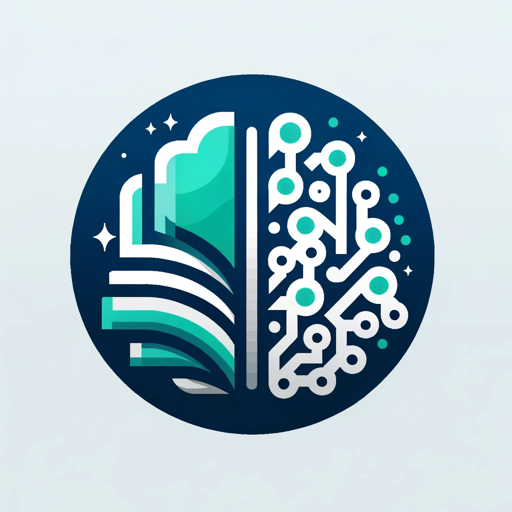Paper Reader-AI-Powered Academic Paper Summarizer
AI-Powered Summaries for Academic Papers
Related Tools
Load More
Paper Reviewer
Human-like, detailed reviewer for scientific papers.

Read Paper
Read arXiv papers using GPT, and feel free to utilize mind maps and other 5 tools to assist in the process.

三五 Paper
精炼学术文献总结与分析

Analyze PDF
Analyzes PDFs to determine if they are research papers and summarizes them.

Research Paper Explorer
Explains Arxiv papers with examples, analogies, and direct PDF links.

Paper Analyzer
Expert in scientific paper analysis & education focus.
20.0 / 5 (200 votes)
Introduction to Paper Reader
Paper Reader is a specialized tool designed to help users understand academic papers quickly and effectively. Its primary function is to summarize academic articles, highlighting key points, methodologies, evaluations, and discussions. This allows users to grasp the essence of the paper without needing to read through the entire document. An example scenario could be a graduate student who needs to review numerous papers for their literature review but has limited time. By using Paper Reader, they can obtain concise summaries and decide which papers are worth a deeper read.

Main Functions of Paper Reader
Summarizing Academic Papers
Example
Extracts key points, issues solved, methodologies, evaluation metrics, and discussions from a given paper.
Scenario
A researcher preparing for a conference presentation needs to review multiple related studies quickly. Using Paper Reader, they can generate summaries of these studies, ensuring they capture essential information without reading each paper in detail.
Identifying Key Citations
Example
Highlights important references within a paper to facilitate further reading and research.
Scenario
A doctoral candidate is writing a thesis and needs to identify seminal works in their field. By using Paper Reader, they can quickly find which papers are most frequently cited and relevant to their research.
Comparative Analysis
Example
Compares a new paper with previous research to highlight advancements and differences.
Scenario
An academic reviewer is assessing a manuscript for publication. They use Paper Reader to compare the manuscript's contributions with existing literature, helping to determine its novelty and significance.
Ideal Users of Paper Reader
Graduate Students
Graduate students often need to review a vast amount of literature for their theses or dissertations. Paper Reader helps them quickly summarize and understand key points from numerous papers, making their literature review process more efficient.
Researchers and Academics
Researchers and academics who are pressed for time can benefit from Paper Reader by obtaining quick summaries of new studies in their field. This allows them to stay up-to-date with the latest research without needing to read every paper in full.

Steps to Use Paper Reader
Step 1
Visit aichatonline.org for a free trial without login, also no need for ChatGPT Plus.
Step 2
Upload the PDF of the academic paper you want summarized or provide the URL if the paper is accessible online.
Step 3
Select the specific sections you want summarized, such as 'Key Points' or 'Evaluation Metrics'.
Step 4
Click on the 'Summarize' button to generate the summary of the selected sections.
Step 5
Review the generated summary and use the provided insights for your academic writing, research, or study purposes.
Try other advanced and practical GPTs
AirnBnB
AI-powered destination insights for travelers

Satoshi
AI-powered Bitcoin insights and analysis

Behnevis Persian (Farsi) Translator بهنویس
AI-powered Persian translation and grammar tool.

Use Flutter
AI-powered solutions for development and writing.

CustomerEd Strategist & Growth Advisor
AI-Powered Customer Education for Business Growth

Perfect Prompt Optimiser
AI-powered prompt generator for smarter AI outputs.

Self Aware Networks GPT
Unlock the Future with AI-Powered Theoretical Research
Vintage Cartoon Transformer
Transform images with AI-powered vintage cartoon effects.

HomeFixer DIY Guide
AI-Powered DIY Home Repair Assistance

Code Crafter
Your AI-powered coding assistant

Grammar Guardian
AI-powered grammar perfection

Dungeon and Dragons Map Designer
AI-powered Fantasy Map Creation
- Academic Research
- Study Aid
- Literature Review
- Research Summary
- Paper Analysis
Frequently Asked Questions about Paper Reader
What types of documents can I upload to Paper Reader?
You can upload PDF documents of academic papers, research articles, and other scholarly works.
Can Paper Reader summarize papers from any academic field?
Yes, Paper Reader is designed to handle papers from a wide range of academic disciplines, including sciences, humanities, and social sciences.
How accurate are the summaries provided by Paper Reader?
The summaries are generated using advanced AI algorithms to ensure they are concise and capture the essential points accurately.
Is there a limit to the number of papers I can summarize?
Currently, there are no limits during the free trial period. However, usage limits may apply in the future based on subscription plans.
Can I use Paper Reader for non-academic documents?
While Paper Reader is optimized for academic papers, it can also be used to summarize other types of detailed and structured documents.